 |
 |
London was founded by the Romans around AD 43, and the Roman
town occupied roughly the same area as the
"square mile" of the "City" today. The Romans built their town here as it was
the furthest point up the Thames that
ships could easily reach on the tide, and the geological conditions also meant
the the river could be bridged here
too.
The Romans were temporally removed when Queen Boudicca sacked their town in
AD 60. However the Romans
returned and strengthened their settlement with a wall about 2 miles in perimeter,
20 feet high and 9 feet thick.
Remains of this wall can still be seen today in Coopers Row (below left) and
Roman coins are found here too
(below right)
 |
 |
The Roman wall still was large enough to contain the city 1000
years later, when William the Conqueror arrived in
the town, fresh from his victory at the Battle of Hastings. By now the city
of Westminster was developing to the
west of the City of London. Edward the Confessor has built his palace there
and had established Westminster
Abbey.
William the Conqueror set about building a great castle, the Tower of London.
The White Tower, in the centre of
the present complex, is the oldest and most impressive buildings from this period.
In its time it has been fortress,
palace and prison. It has seen many famous prisoners and many executions
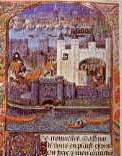 |
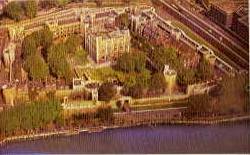 |
By 1616, when the scene below was painted, London was a busy
capital city. Old St Paul's can be seen centre left,
and old London Bridge centre right, with the houses and shops built on the bridge
itself. Shakespeare's Globe
Theatre had recently opened. Most of the buildings were made of wood. And being
made of wood was the
problem when a bakers oven overheated in Pudding Lane on 2nd September 1666.
The fire quickly spread
 |
|
Only Staple Inn in Holborn (below left) survives today as an
example of what London looked like then. The
contemporary painting shows the Great Fire at is height, with Old St Paul's
burning in the centre
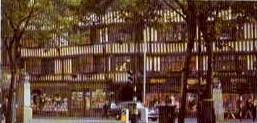 |
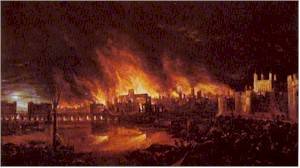 |
remarkably only 4 people were killed, but 13,000 houses were
destroyed. And a new law was immediately passed
decreeing that all new buildings had to be in stone or brick!
And by the late 17th century an entirely new city had arisen on the site of
the old. Sir Christopher Wren created
the new St Paul's, on the site of the 7th century cathedral. 20 more of Wrens
city churches survive today
London's population now started to grow rapidly. Developers like the Grosvenor
family began to build in Mayfair
and St James. The main innovation of this period was "the square". Also the
Royal Parks, once royal hunting
grounds, were gradually opened to the public
St James Square has only altered today in that the fountain (below left) has
been replaced by a garden in the centre
(below right)
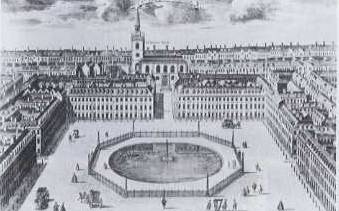 |
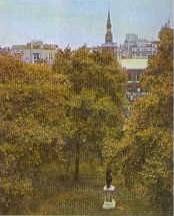 |
Next came the fashionable terraces of the 18th century. You
can see, below left and right, that these too have stood
the test of time
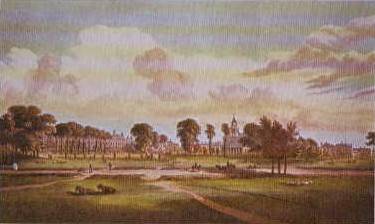 |
|
The arrival of the railway created another wave of development
in the late 1800's. St Pancras then and now
(below) looks more like a Gothic castle than a railway station. Other large
railway stations were built all round the
edge of the main town
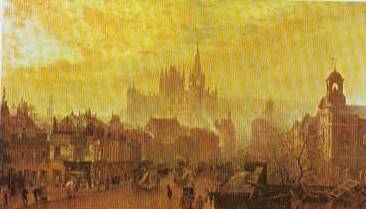 |
|
And in 1939 to 1945 war, another great change
to the landscape took place as German bombing removed much of
the old housing. Remarkably St Paul's survived the incendiary bombing - standing
above the flames of all around
in this 1940 photograph
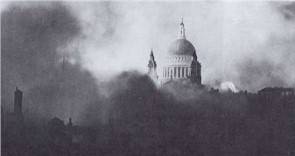
Development has continued in the 80's and 90's with some, but not many skyscrapers.
London has remained more
immune to this form of development than most modern cities
London Calling - return to London Calling front
page , click here
And for a good hotel to stay at in the West End
of London click here
London history